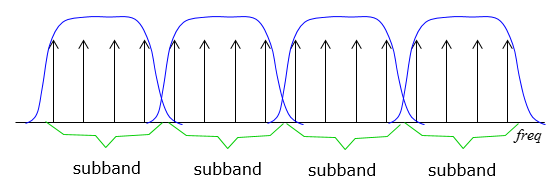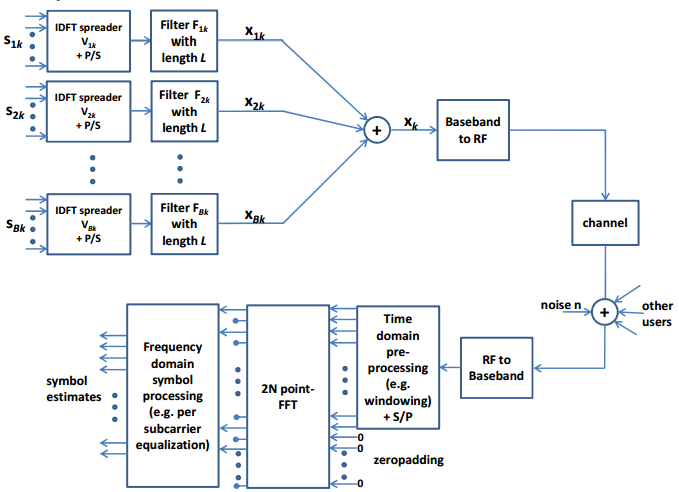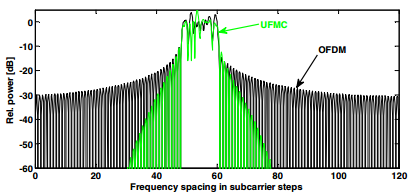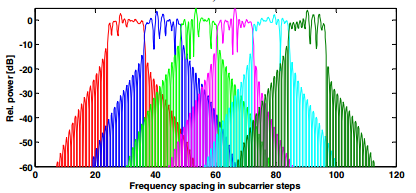|
|
||
|
Like other 5G Waveform Candidates, UFMC is also based on the filtering method. The differentiator is how and what type of the filter is applied. In case of FBMC, it packs multiple consecutive subcarries into a group called 'subband' and apply the filter onto each of the subband as illustrated below. How many subcarries would belong to one subband is a design specification. The more subcarries in one subband, the less load on baseband processing, but final performance gets poorer as you put more sub carriers into one subband.
Basic concept and characteristics of UFMC is well explained in the video 5G Waveform Comparison from Anritsu as stated below. This takes the waveform of OFDM that we have for LTE today and we make a subtle adaptation to it. We are going to filter a subgroup of carriers, so multiple carriers in a bank filtered together. This give us the ability to improve the out of band emission and it gives us the ability to improve the spectral efficiency and at the same time we can have cyclic prefix if we want, so we can still support MIMO in this filter technology. Overall tranciever structure of FBMC can be illustrated as below (This is from Ref [1]). As you see from the top left, you see multiple subcarriers are grouped into a subband. For example, s_1k indicates subband 1 that is composed of k subcarriers. And each subband goes to a separate IDFT process and converted into Time Domain sequence and then get filtered. Then, output sequence of each filters are combined and upconverted to RF and get transmitter.
The effect of applying filters to a single subband can be obvious comparing to OFDM as shown below (this plot is from Ref [1]). You would notice much improved stopband rejection in UFMC (green) comparing to the OFDM.
In real use case, it would be common to allocate the multiple subband sitting next two each other as shown below. Since the rejection of stopband has been improved a lot, the interference between a subband and neighbouring subband can be much lower comparing to OFDM case.(this plot is from Ref [1]).
Reference[1]Waveform contenders for 5G suitability for short packet and low latency transmissions Frank Schaich, Thorsten Wild, Yejian Chen Alcatel-Lucent AG Bell Labs Stuttgart, Germany {frank.schaich, thorsten.wild, yejian.chen}@alcatel-lucent.com
|
||



